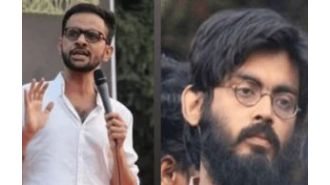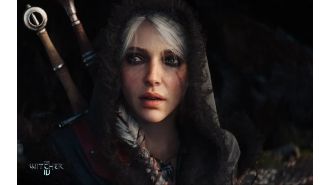Max, a 25-year-old artist, risks it all to paint the perilous realities of war.
Max has a painting kit with protective gear: a flak jacket and bulletproof helmet.

Max Denison-Pender is an artist who is not afraid to push the boundaries of art. Born in Chile and having moved to England at 13, he has traveled to some of the most far-flung corners of the world to document life in the raw through the medium of paint. His previous subjects have included erupting volcanoes in Iceland, illicit miners in the Congo, and encounters with indigenous Korubo members in the Amazon Rainforest.
Max's latest project, however, is arguably his boldest move yet - three weeks painting on the Eastern Ukrainian front. After organizing a last-minute trip to Ukraine with his long-time friend and collaborator Henry Harte, Max found himself embedded with an assault battalion behind the frontlines of Bakhmut.
Max remembers his first day in Bakhmut being both terrifying and overwhelming. "My heart was pounding in my chest," he recalls. "We sat in an SUV, hurtling past all these blown-out buildings as we made our way to our temporary home for the next few weeks. I was thinking, 'Oh god, what are we doing?' When we finally reached the battalion, it was nothing but smiles and hugs from everyone. The welcome was overwhelming."
Max quickly recognised the difference between incoming and outgoing artillery fire. Despite the danger, he was inspired to seize this opportunity to explore what it means to be human in extreme circumstances. As Max painted the portraits of people in the battalion, he found himself connecting with them on a deeper level - realising that beneath the uniforms and body armour, they were just people, someone's father, mother, sister, or brother.
One of the people Max painted was Torri, a 22-year-old combat medic. Soldiers in the battalion had told Max that Torri had saved at least 50 people and that not a single person had died whilst under her care.
When Max showed his exhausted subject the completed, still wet portrait, the soldier smiled and hugged him before leaving for the frontline. Max hoped that he would be alive to enjoy the sunset that evening.
Max believes that adventuring artists have a role to play in the world. "It's never tourism," he says, "but more of a palpable urge to witness and document the extreme edges of life on Earth." He and Henry hope that by documenting these human experiences, they will be able to shed some light on the chaos of the ongoing war in Ukraine.
Max Denison-Pender was perched against an abandoned car when the ground shook from an indirect shell. He knew the difference between incoming and outgoing artillery fire and, from an artist's perspective, realised the early morning sunlight was too good to pass up.
Max, 25, is a British artist known for eschewing the comfort of a cosy studio in favour of packing his easel, paints and brushes to head off to far-flung corners of the planet to document life in the raw.
His previous subjects have included erupting volcanoes in Iceland, illicit miners in the Congo, encounters with indigenous Korubo members in the Amazon Rainforest and studies of rare and dangerous wildlife across the globe.
But his latest venture was arguably his boldest move yet; three weeks painting on the Eastern Ukrainian front. Alongside his long-time friend and fellow artist Henry Harte, they embarked on a project to capture the human experiences of those living in the most hazardous locations.
When Max showed his tired subject the completed, still wet portrait, the soldier smiled and hugged Max before leaving for the frontline. Little did Max know, this man was a combat medic who had saved at least 50 lives.
Back in his south London studio, Max reflects on his trip. ‘It’s never tourism,’ he says, ‘but more of a palpable urge to witness and document the extreme edges of life on Earth.’
He admits it wasn’t easy to explain to family why he was leaving for a battlefield to paint humans at war. ‘Just because something’s dangerous, why should we let it get in the way of creating powerful art?’
Max and Henry experienced first-hand the cramped confines of a destroyed tank and witnessed the welcome the soldiers gave them. Max paints a portrait of Torri and admits that, beyond the uniforms and body armour, he wanted to explore what it really meant to be human in extreme circumstances.
Max’s work reminds us that the soldiers fighting in the war are someone’s father, mother, sister or brother. He hopes his paintings will capture the genuine side of those living in the most hazardous locations and show the power of art to connect us, even in the most extreme circumstances.




